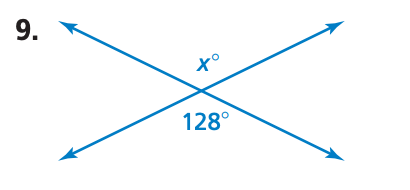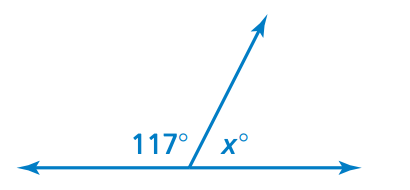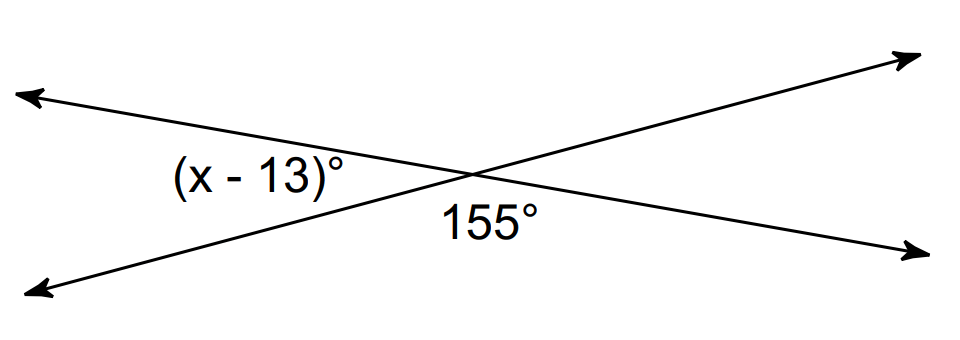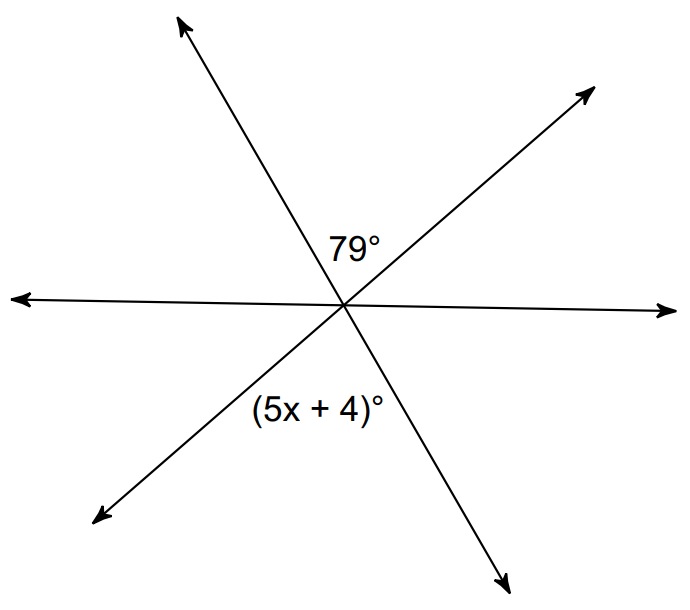Sometimes, always, or never?
Skew lines ______ intersect.
Never
If two parallel lines are cut by a transversal, what is the relationship between the consecutive interior angles formed?
Consecutive interior angles add up to 180.
If two parallel lines are cut by a transversal, what is the relationship between the corresponding angles formed?
Corresponding angles are congruent.
Two lines are cut by a transversal. If angles A and B are corresponding and the measure of angle A is 80 degrees and the measure of angle B is 90, does that prove that the lines are parallel? Why?
No. Angles A and B must be congruent.
Fill in the blank:
Vertical angles are ______
Linear pairs are _______
Congruent
Supplementary
Sometimes, always, or never?
Skew lines are _________ parallel.
Never
If two parallel lines are cut by a transversal, what is the relationship between the alternate interior angles formed?
Alternate interior angles are congruent.
If two lines are parallel and cut by a transversal, then consecutive interior angles are _____________.
Name and angle measure.
Supplementary, 180 degrees
Two lines are cut by a transversal. If angles A and B are consecutive interior angles and the measure of angle A is 80 degrees and the measure of angle B is 100, does that prove that the lines are parallel? Why? What theorem was used?
Yes. Consecutive interior angles add up to 180 degrees using Consecutive Interior converse.
What is the value for x in the diagram. Explain what angle relationship you used. 
128 degrees, because they are vertical angles which are always congruent
Sometimes, always, or never?
Two parallel lines __________ lie in the same plane.
Always
If two parallel lines are cut by a transversal, what is the relationship between the vertical angles formed?
Vertical angles are congruent.
If two parallel lines are cut by a transversal, and alternate interior angles are congruent, and if one of those alternate interior angles is x+15, and the other is 2x+5.
What is the value of x?
x = 10
Two lines are cut by a transversal. If angles A and B are alternate interior angles and the measure of angle A is 80 degrees and the measure of angle B is 100, does that prove that the lines are parallel? Why? What theorem was used?
No. Alternate interior angles are congruent. Alternate interior Converse was not upheld.
Find the value of x and explain what angle relationship you used to reach your answer.
x = 63
Define skew lines
Two lines that will never intersect that are on different planes.
If two parallel lines are cut by a transversal, what is the relationship between the alternate exterior angles formed?
Alternate exterior angles are congruent.
If two parallel lines are cut by a transversal, then consecutive interior angles are supplementary, and if one of those consecutive interior angles is 3x+4 and the other is 2x+6,
Find the value of x
x=34
Two lines are cut by a transversal. If angles A and B are consecutive exterior angles and the measure of angle A is 80 degrees and the measure of angle B is 80, does that prove that the lines are parallel? Why? Draw a picture and describe the theorems used.
No. Same side exterior angles must be supplementary.
Solve for x: 
x = 38
Describe a real-world example or model of parallel planes.
Ex: floor and ceiling
Two parallel lines are cut by a transversal. If Angles 3 and 4 are alternate exterior angles and the measure of angle 3 is 80 degrees, what is the mesure of angle 4?
80 degrees
If two lines are parallel and cut by a transversal, then consecutive interior angles are supplementary, and if one of those interior angles is 7x+12 and the other is 3x+8...
What are the measures of each angle?
56 degrees and 124 degrees
Two lines are cut by a transversal. If angles A and B are vertical angles and are congruent, does that prove that the lines are parallel? Why?
No. Vertical angles are always congruent and therefor do not prove lines are parallel.
Solve for x: 
x = 15